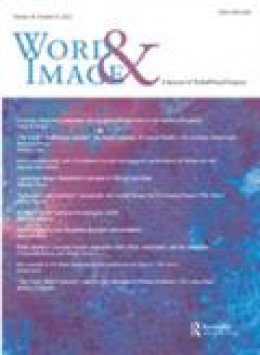發表《Word & Image》雜志多久能被SCI數據庫收錄?
來源:優發表網整理 2024-09-18 11:22:19 293人看過
通常情況下,《Word & Image》雜志發表的文章被SCIE數據庫收錄的時間沒有固定標準,若想了解詳細、準確的具體情況,建議直接與雜志社取得聯系或者向在線客服進行咨詢。
多久能被SCI數據庫一般可以歸納出以下情況:
論文發表后到在線時間:SCI論文發表后,一般需要大約3個月的時間才能在期刊官網上線,這是論文初次對外公開的時間點。
在線后到數據庫檢索時間:論文在線后,通常還需要1-3個月的時間才能在Web of Science(WOS)數據庫中檢索到,這個過程被稱為論文的索引或收錄。
整體時間周期:從投稿到論文被SCI數據庫收錄,整個周期大概需要一年左右的時間。具體來說,投稿后可能需要5-6個月收到接收通知,然后經過2-3個月論文會在官網上線,再之后2-3個月論文會被WOS數據庫收錄。
然而,這個時間周期并不是絕對的,它受到多種因素的影響,如:期刊類型、論文質量、數據庫更新等。
《Word & Image》雜志已被SCIE國際知名數據庫收錄,在JCR分區中位于HUMANITIES, MULTIDISCIPLINARY學科N/A區,在CiteScore評價中位于Arts and Humanities學科的Q3區Arts and Humanities學科的Q3區Arts and Humanities學科的Q4區Arts and Humanities學科的Q4區具有較高的學術影響力,在該領域受到廣泛認可。
WOS分區(數據版本:2023-2024年最新版)
| 按JIF指標學科分區 | 收錄子集 | 分區 | 排名 | 百分位 |
| 學科:HUMANITIES, MULTIDISCIPLINARY | AHCI | N/A | N / A |
0% |
| 按JCI指標學科分區 | 收錄子集 | 分區 | 排名 | 百分位 |
| 學科:HUMANITIES, MULTIDISCIPLINARY | AHCI | Q3 | 210 / 406 |
48.4% |
名詞解釋:
WOS即Web of Science,是全球獲取學術信息的重要數據庫,Web of Science包括自然科學、社會科學、藝術與人文領域的信息,來自全世界近9,000種最負盛名的高影響力研究期刊及12,000多種學術會議多學科內容。給期刊分區時會按照某一個學科領域劃分,根據這一學科所有按照影響因子數值降序排名,然后平均分成4等份,期刊影響因子值高的就會在高分區中,最后的劃分結果分別是Q1,Q2,Q3,Q4,Q1代表質量最高。
CiteScore分區(數據版本:2024年最新版)
| CiteScore | SJR | SNIP | CiteScore排名 | ||||||||||||||||||||
| 0.2 | 0.103 | 0 |
|
名詞解釋:
CiteScore:衡量期刊所發表文獻的平均受引用次數。
SJR:SCImago 期刊等級衡量經過加權后的期刊受引用次數。引用次數的加權值由施引期刊的學科領域和聲望 (SJR) 決定。
SNIP:每篇文章中來源出版物的標準化影響將實際受引用情況對照期刊所屬學科領域中預期的受引用情況進行衡量。
作為一本專注于HUMANITIES, MULTIDISCIPLINARY領域的學術期刊,它致力于發表高質量的研究論文和為相關領域的研究人員提供重要的學術資源。
該雜志出版周期是4 issues/year,平均審稿速度預計為: 。
Text and Image "is an academic journal that focuses on the interaction between language and visual language. It provides a platform for scholars to explore the complex and subtle relationship between text and images, whether from a historical, theoretical, or practical perspective. This journal not only focuses on the harmonious coexistence between text and images, but also explores the possible conflicts and tensions between them. It encourages interdisciplinary research, as the intersection of language and visual language often involves multiple disciplinary fields such as linguistics, visual arts, communication studies, etc.
One of the distinctive features of the journal is the thematic questions edited by experts in the field as guest editors. These thematic questions guide readers to think about specific research directions and stimulate new academic discussions. Through these topics, the magazine not only provides the latest research results for the academic community, but also provides a window for the public to understand language and visual language interaction. It is an indispensable resource for language and visual language researchers, promoting academic exchange and advancing in-depth understanding and research on the relationship between language and visual language.
聲明:以上內容來源于互聯網公開資料,如有不準確之處,請聯系我們進行修改。
